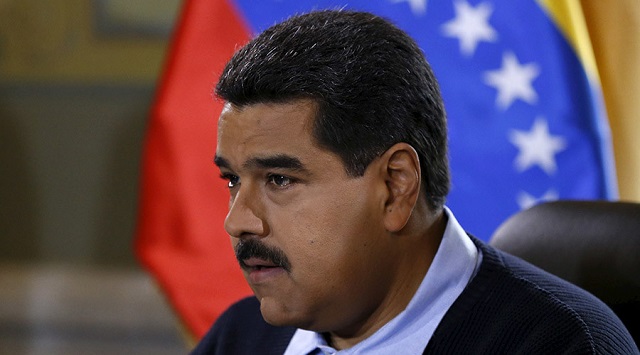
Caracas, Venezuela | AFP | Monday’s brief mutiny by Venezuelan soldiers was not the first time President Nicolas Maduro has faced a military challenge to his leadership.
Since coming to power in 2013 following the death of socialist revolutionary icon Hugo Chaves, the former bus driver Maduro has faced a number of small but armed rebellions.
– Insurrection –
In the early hours of Monday, a group of 27 soldiers took control of a command post in northern Caracas and published a video on social media disavowing Maduro and calling on the people to take to the streets in support of their move.
Allegedly led by Sergeant Major Luis Alexander Bandres Figueroa, the uprising was quickly put down as the command post was surrounded by soldiers and police.
“They were neutralized, surrendered and captured in record time,” said Maduro’s right-hand man, Diosdado Cabello on Twitter.
The mutiny came just two days before a mass protest called by the opposition-controlled National Assembly in support of its president Juan Guaido, who says he has the power to form a transitional government and call new elections.
– ‘Attack’ –
In August, Maduro claimed to have been targeted by a terrorist attack after two explosives-laden drones went off during a military parade in Caracas, injuring seven soldiers.
Maduro put the blame on exiled opposition deputy Julio Borges, sheltering in neighboring Colombia, and that country’s then-president Juan Manuel Santos.
Around 30 people were arrested, among them two generals and opposition deputy Juan Guaido, who was later released and in January became parliament’s president.
Maduro had been giving a speech at the time when the two drones exploded, causing him, his entourage and the entirety of the military contingents on parade to flee the scene, much to the later amusement of social media commentators.
– Assault –
In August 2017, a score of men, including three military personnel, attacked Fort Paramacay in the northern city of Valencia.
A three-hour firefight broke out, after which two of the attackers were dead and eight had been arrested, while the others made off with weapons.
The group was led by former army captain Juan Carlos Caguaripano, who was detained five days later.
During the assault, Caguaripano released a video claiming the group was rebelling against Maduro’s “illegitimate tyranny.”
He had previously been expelled from the armed forces in 2014 for rebellion and betrayal.
He insisted, though, that his motive was to “re-establish constitutional order” and that it was not a coup d’etat.
– Rebel pilot –
In June 2017, during anti-Maduro protests that left 125 people dead, ex-policeman Oscar Perez fired a grenade from a stolen helicopter at the regime loyalist-dominated Supreme Court, which had earlier in the year stripped the opposition-controlled National Assembly of all its powers.
He also fired on the Interior Ministry in central Caracas, although neither attack left anyone injured.
Perez, who was accompanied by armed men, published a video demanding that Maduro resign and claimed his aim was also to “restore constitutional order.”
The ex-pilot spent several months on the run before leading a commando unit that robbed a National Guard post in the northern state of Miranda of 26 Kalashnikovs and other weapons.
Perez published videos of the assault, in which his band tied up several members of the National Guard.
The renegade was killed the next month, though, alongside six of his collaborators, during a military operation to capture him on the outskirts of Caracas.
Another eight members of his group were arrested following the firefight, which lasted several hours and was streamed live on social media by a bloodied Perez, who claimed he wanted to surrender but was pinned down by snipers.
The opposition accused the government of carrying out an “extrajudicial execution.”
 The Independent Uganda: You get the Truth we Pay the Price
The Independent Uganda: You get the Truth we Pay the Price



